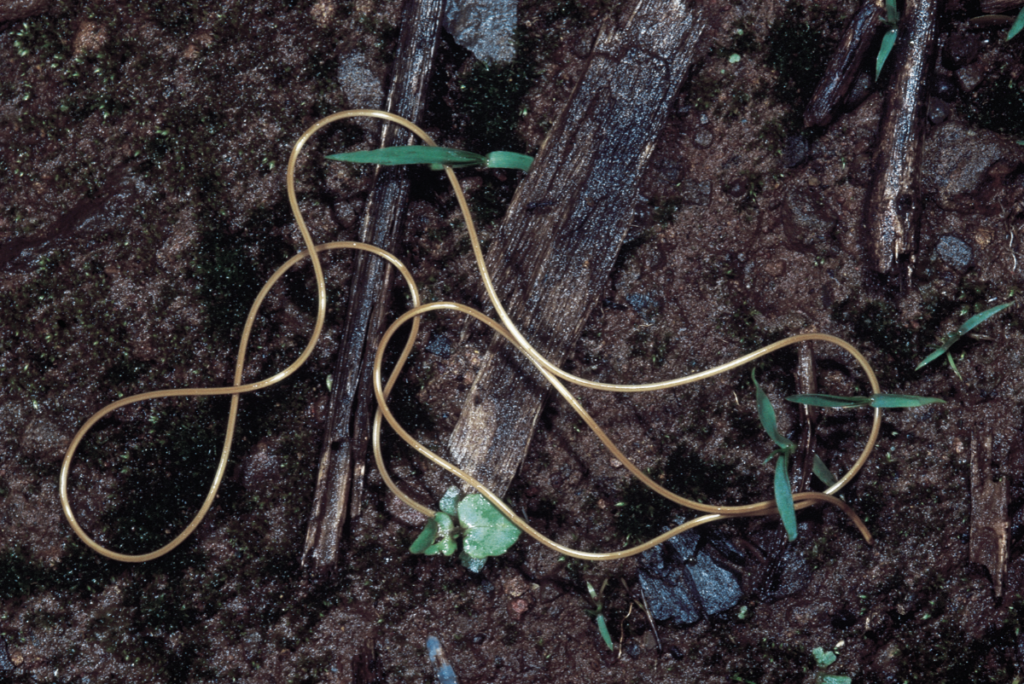Welcome back to the Lab!
Parasites have long occupied a niche space within the horror genre. Think Alien (1979), Shivers (1975), The Thing (1982), and the metaphorical (yet aptly named) Parasite (2019). While these examples may be exaggerated, inspiration often comes from real-life examples, with insects often bearing the brunt of natures gruesome, parasite-host relationships. We’ve covered zombie fungus, alien wasp larvae, now it’s time to examine the irresistible siren song of nematomorphs.
Nematomorphs (also called horsehair worms or Gordian worms, after the legend of the Gordian knot) live complex lifecycles. Once thought to be literal horse hair that spontaneously sprang to life upon hitting the water, we now have a better grasp on how this nematode-like worm lives and reproduces. Nematomorph adults are free-living (i.e., without a host) aquatic organisms, and lay their eggs en masse in whatever body of water they occupy – from ponds to puddles to dog bowls. Once the eggs hatch, the larvae lie in wait with a single goal: becoming someone else’s lunch.
Nematomorphs parasitize many insect taxa, but the most well-known are those that infect orthopterans – crickets and grasshoppers. Once ingested by their target host, they settle in, absorbing nutrients directly through their cuticle. However, infected orthopterans do not exhibit behavior that would suggest the presence of a nematomorph, with one exception: they stop chirping.

Exactly how the worms manipulate their hosts behavior is subject to ongoing research. In a breakthrough study in 2005, researchers found that not only was the nematomorph producing chemicals that mimicked host neurotransmitters, they were also able to induce neurotransmitter production in the host insect brain. By both directly and indirectly influencing the way the host brain receives and interprets messages, the nematomorph is able control the hosts response to environmental stimuli.
An infected insect has one last stop before the lifecycle is complete. As I mentioned before, adult nematomorphs are free-living aquatic organisms. In order to get there, the worms encourage their usually hydrophobic host to find the nearest water source, and dive right in. The manipulation is so effective that an infected cricket will choose a watery grave over its usual terrestrial lifestyle every time. Once the cricket has taken the plunge, the worm (or occasionally, worms) will wriggle out and seek a mate to start the lifecycle again. The cricket is left to drown, having fully succumbed to the siren song.
Until next time, thanks for visiting the lab!
Bug Wrangler Brenna
brenna@missoulabutterflyhouse.org
Want to revisit a previous Notes from the Lab issue? Check out our archive! Do you want to request a subject for an upcoming issue? Email me at the address above and put “Notes from the Lab” in the subject line.